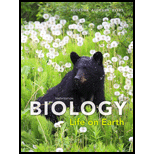
Concept explainers
Organisms that interact serve as agents of _________ on one another. This results in __________. which is the process by which species evolve adaptations to one another.
To review:
The given blank space in the statement, “organisms that interact serve as agents of _______on one another. This results in ________, which is the process by which species evolve adaptations to one another.”
Introduction:
An ecosystem comprises of flora and fauna with their numerous species, which live in harmony. These species interact with each other from time-to-time, either within the same species or between species. These interactions may prove beneficial to some and may harm others.
Explanation of Solution
Despite the fact that species interaction may not always be beneficial for all the species, it does benefit the ecosystem as a whole. The species usually compete for food, space, and mating. The organisms that prove to be better than the others pass on their genes to future generations. The better traits tend to pass on while the defective ones get perished. Thus, they serve as agents of natural selection.
For example, a predator attacks a weak prey while leaving the one that is beyond its capability to catch. With time, the predator may acquire more fierce traits while the prey, which is spared, may increase its population by breeding. Thus, both the species help each other in adapting to their respective traits. This process is known as coevolution.
Organisms that interact serve as agents of natural selection on one another. This results in coevolution, which is the process by which species evolve adaptations to one another.
Want to see more full solutions like this?
Chapter 27 Solutions
Biology: Life on Earth
- What symbolic and cultural behaviors are evident in the archaeological record and associated with Neandertals and anatomically modern humans in Europe beginning around 35,000 yBP (during the Upper Paleolithic)?arrow_forwardDescribe three cranial and postcranial features of Neanderthals skeletons that are likely adaptation to the cold climates of Upper Pleistocene Europe and explain how they are adaptations to a cold climate.arrow_forwardBiology Questionarrow_forward
- ✓ Details Draw a protein that is embedded in a membrane (a transmembrane protein), label the lipid bilayer and the protein. Identify the areas of the lipid bilayer that are hydrophobic and hydrophilic. Draw a membrane with two transporters: a proton pump transporter that uses ATP to generate a proton gradient, and a second transporter that moves glucose by secondary active transport (cartoon-like is ok). It will be important to show protons moving in the correct direction, and that the transporter that is powered by secondary active transport is logically related to the proton pump.arrow_forwarddrawing chemical structure of ATP. please draw in and label whats asked. Thank you.arrow_forwardOutline the negative feedback loop that allows us to maintain a healthy water concentration in our blood. You may use diagram if you wisharrow_forward
- Give examples of fat soluble and non-fat soluble hormonesarrow_forwardJust click view full document and register so you can see the whole document. how do i access this. following from the previous question; https://www.bartleby.com/questions-and-answers/hi-hi-with-this-unit-assessment-psy4406-tp4-report-assessment-material-case-stydu-ms-alecia-moore.-o/5e09906a-5101-4297-a8f7-49449b0bb5a7. on Google this image comes up and i have signed/ payed for the service and unable to access the full document. are you able to copy and past to this response. please see the screenshot from google page. unfortunality its not allowing me attch the image can you please show me the mathmetic calculation/ workout for the reult sectionarrow_forwardIn tabular form, differentiate between reversible and irreversible cell injury.arrow_forward
 Human Biology (MindTap Course List)BiologyISBN:9781305112100Author:Cecie Starr, Beverly McMillanPublisher:Cengage Learning
Human Biology (MindTap Course List)BiologyISBN:9781305112100Author:Cecie Starr, Beverly McMillanPublisher:Cengage Learning
 Biology Today and Tomorrow without Physiology (Mi...BiologyISBN:9781305117396Author:Cecie Starr, Christine Evers, Lisa StarrPublisher:Cengage Learning
Biology Today and Tomorrow without Physiology (Mi...BiologyISBN:9781305117396Author:Cecie Starr, Christine Evers, Lisa StarrPublisher:Cengage Learning Biology (MindTap Course List)BiologyISBN:9781337392938Author:Eldra Solomon, Charles Martin, Diana W. Martin, Linda R. BergPublisher:Cengage Learning
Biology (MindTap Course List)BiologyISBN:9781337392938Author:Eldra Solomon, Charles Martin, Diana W. Martin, Linda R. BergPublisher:Cengage Learning





